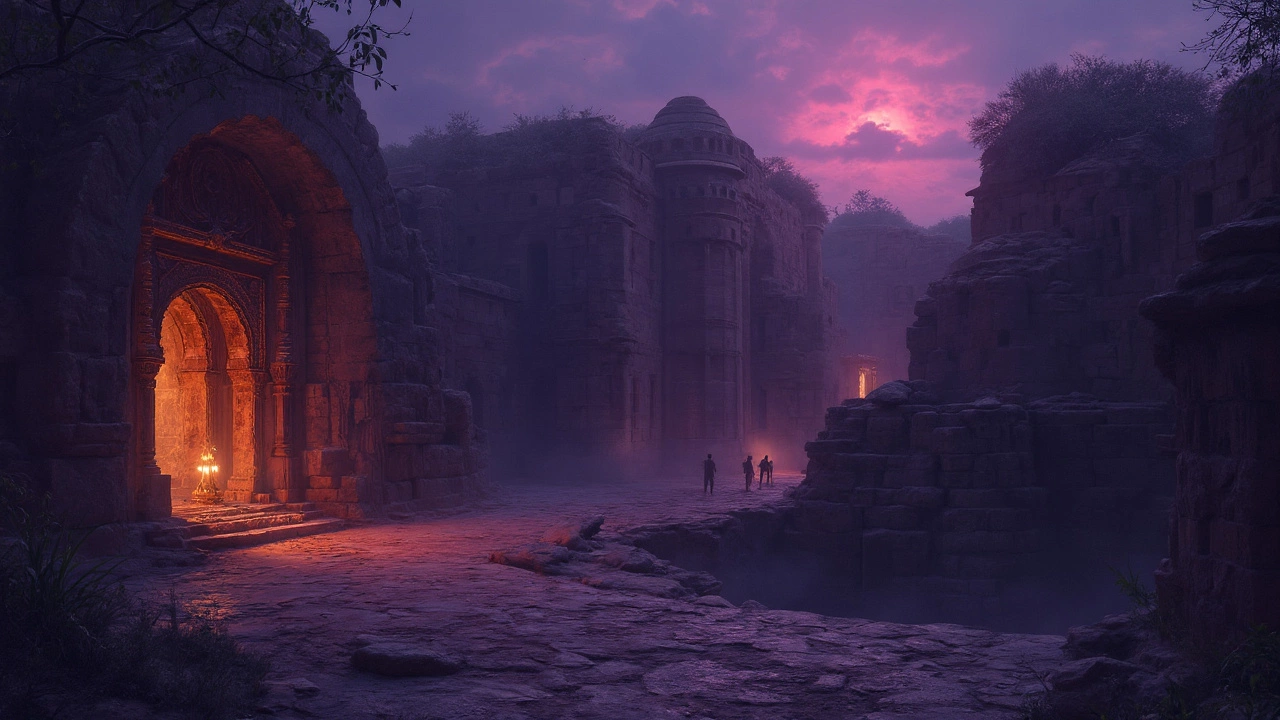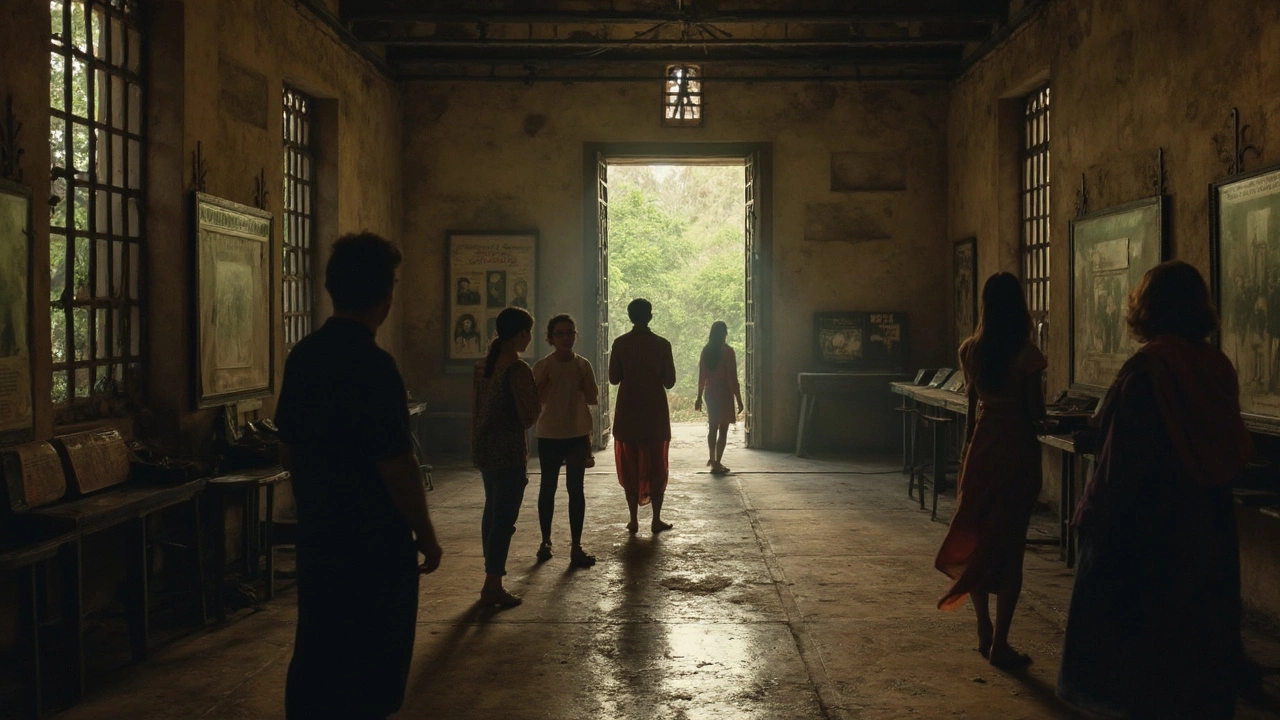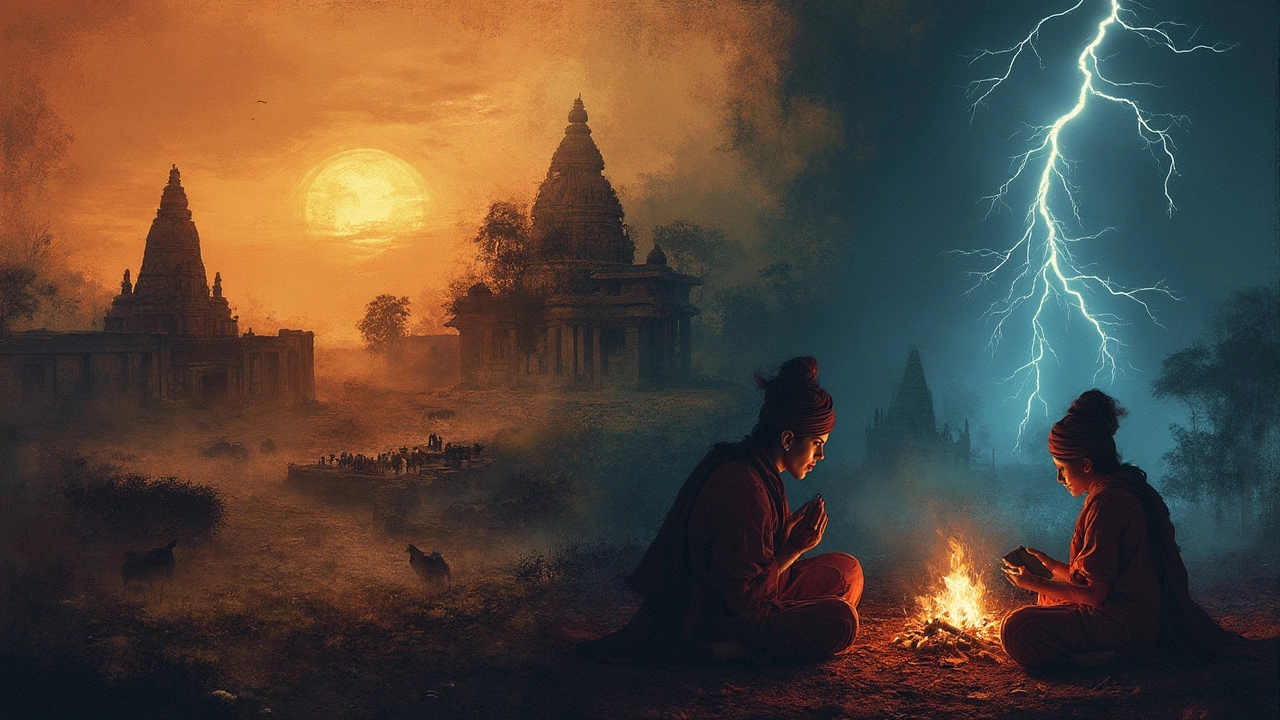Dark Tourism: Which Country Stands Out?

- May, 31 2025
- 0 Comments
- Aaron Blackwood
Most people look for beaches or mountains when they travel. But some want something different: places with real stories, sometimes tragic or eerie, where history left a mark you can almost feel. That's where dark tourism steps in. It's about visiting locations where major events—wars, disasters, crimes—shaped not just a country, but human memory itself.
So which country always pops up when people talk about dark tourism? It's usually places with well-known histories of conflict or disaster. The top contender is Poland, mostly because of Auschwitz. Millions visit this site every year to understand what really happened there. It’s heavy, but that’s also what draws people—the chance to stand in the very spots where history turned grim, and learn what books can’t really explain.
- What is Dark Tourism, Really?
- The Top Country for Dark Tourism
- Dark Tourism Hotspots in India
- Why People Are Drawn to Dark Tourism
- Tips for Responsible Dark Tourism
What is Dark Tourism, Really?
Dark tourism isn’t as weird as it sounds. It’s simply visiting places connected to tragedy, death, or the past’s messiest chapters. Instead of sunshine and roller coasters, it’s about learning hard truths and understanding history where it happened. People don’t just visit these places out of curiosity—you end up thinking about what happened there, how it changed lives, and why it matters now.
The term ‘dark tourism’ was actually made official in the late 1990s by professors John Lennon and Malcolm Foley. They pointed out that more folks were choosing to visit sites tied to war, disaster, or crime, and not just museums or landmarks. Today, the industry is big—some say events like the Chernobyl tours and visits to Auschwitz or Ground Zero draw in millions every year. For example:
| Site | Annual Visitors |
|---|---|
| Auschwitz (Poland) | Over 2 million |
| Chernobyl (Ukraine) | 60,000+ |
| Ground Zero (USA) | About 4 million |
Some places, like Auschwitz, don’t let you take selfies or goof around. It’s about respect. You’re standing on ground where real people suffered. This isn’t the time for jokes or Instagram stories—think of it like a living classroom.
If you’re wondering what counts as dark tourism, here’s what usually makes the list:
- Sites of wars or genocide, like concentration camps or battlefields
- Natural disaster locations (for example, volcano eruptions, tsunamis)
- Places tied to crime or execution (prisons, old courthouses)
- Haunted places with a real history, not just made-up stories
According to Dr. Philip Stone, a top researcher in this field,
“Dark tourism helps people understand difficult episodes in human history—it gives context that’s hard to get anywhere else.”
So, dark tourism definitely isn’t about being creepy. It’s about being curious and open-minded, and sometimes it’s the only way to really ‘get’ what history books leave out.
The Top Country for Dark Tourism
If you ask folks who’ve dived into dark tourism, Poland always gets a mention, and for good reason. The Auschwitz-Birkenau concentration camp is the most-visited dark tourism site in the world. Each year, about two million people walk through its gates, wanting to see the place where some of the darkest episodes in history actually happened.
Poland isn’t only about Auschwitz, though. The country has a ton of WWII sites, Soviet bunkers, and even abandoned train stations that all carry a heavy past. Warsaw’s Warsaw Uprising Museum gives a raw view of the resistance during Nazi occupation, and the Wolf’s Lair—Hitler’s old wartime headquarters—is a hit with history buffs looking for something real and raw.
Here’s a quick breakdown of why Poland stands out when people talk about dark tourism:
- Auschwitz-Birkenau: Sometimes people spend hours wandering here, guided tours included. The reality of the Holocaust hits hard, but most agree it’s unforgettable and important.
- Majdanek Concentration Camp: Less busy than Auschwitz but just as striking—visitors say the preserved buildings and artifacts make the experience almost too real.
- Wolf’s Lair: Deep in the woods, this was where Hitler almost got assassinated. Now, people explore the concrete ruins and see wartime relics up close.
- Warsaw Uprising Museum: This spot mixes old artifacts and technology—sometimes loud, sometimes silent—but always powerful in telling how regular people stood up against a foreign army.
It’s not just museums and ruins. Poland really goes all-in with memorials, detailed placards, and guided tours, making sure visitors don’t just look but actually learn something important about these places. For anyone into history or wanting to understand human resilience, these dark sites are worth your time.
| Site | Annual Visitors |
|---|---|
| Auschwitz-Birkenau | 2,000,000+ |
| Warsaw Uprising Museum | 700,000+ |
| Majdanek | 80,000+ |
| Wolf's Lair | 300,000+ |
So when it comes to the top destination for dark tourism, Poland is pretty much at the center, thanks to how deeply these places are woven into the story of the 20th century. The mix of location, history, and how the sites are handled really sets it apart. People don’t just visit, they leave with a different perspective.

Dark Tourism Hotspots in India
When it comes to dark tourism, India brings something that feels different from Europe: a mix of haunted tales, battle sites, and spots that force you to look at history’s tough side. You won’t just find stories of ghosts, but real moments that shaped the country’s culture and memory.
Let’s break down some of the main hotspots:
- Bhangarh Fort, Rajasthan: Known as the most haunted place in India, possibly in Asia. It’s so spooky that the Archaeological Survey of India put up a board warning visitors to stay away after sunset. Locals tell stories about a curse that sealed the fate of the whole town.
- Jallianwala Bagh, Amritsar: This garden is now a simple park, but in 1919 it saw the killing of hundreds of unarmed Indians by British soldiers. The bullet holes are still there. Every year, thousands visit to honor those who died and to understand the weight of that day.
- Chemical Gas Tragedy Sites, Bhopal: You can see memorials and the factory site from the world’s worst industrial disaster in 1984. More than 3,700 people died on that night, but later estimates are even higher. Visiting here puts you face-to-face with industrial history gone wrong.
- Kuldhara Village, Rajasthan: This abandoned village is another magnet for those who crave a ghostly touch. Legend says everyone vanished overnight, leaving empty homes and a chilling silence. Many visitors report a weird, uneasy feeling even today.
- Cellular Jail, Andaman Islands: Built by the British for Indian freedom fighters, this jail is known for its harsh punishment rooms and isolation cells. If you visit, you’ll see black-and-white pictures of prisoners, and walk through the same corridors where they spent years cut off from the world.
Here’s a quick table with some figures so you see the scale at a glance:
| Location | Historic event/legend | Estimated annual visitors |
|---|---|---|
| Bhangarh Fort | Haunted/Abandoned city | ~500,000 |
| Jallianwala Bagh | 1919 Massacre | 1.5 million+ |
| Bhopal | Gas tragedy site | ~150,000 |
| Kuldhara Village | Ghost town | ~350,000 |
| Cellular Jail | Colonial prison | 700,000+ |
If you plan on visiting these places, just keep in mind: many are protected heritage sites, and a little respect goes a long way. Don’t expect ghost hunts at every spot—some are mainly for understanding past events and reflecting on what happened there. Either way, these hotspots give you a window into India’s complex and sometimes dark history that regular guidebooks barely touch.
Why People Are Drawn to Dark Tourism
Let’s be real—there’s something about places with a heavy past that pulls people in. It’s not about thrill-seeking or being weird for the sake of it. A lot of folks head to these locations because they want to understand what happened, straight from the source. Standing where history actually happened hits differently than just reading about it. For example, surveys from the University of Central Lancashire showed that about 50% of dark tourism visitors want to feel connected to history and learn lessons from past tragedies.
Another reason? Some travelers are just plain curious about what life (and death) looked like in the toughest chapters of the world's story. Take Auschwitz in Poland or Chernobyl in Ukraine—both draw huge crowds every year, not for fun, but to face up to what humans have been capable of.
Here’s a breakdown of popular motivations for taking a trip like this:
- Searching for firsthand understanding of major historical events
- Paying respects to victims, often in places like concentration camps or memorials
- The raw, unpolished experience—no tourist gloss, no sugar-coating
- A desire for unique stories to bring back, way beyond typical travel snaps
And it’s not just an odd trend. Check out this quick look at the stats on dark tourism in some top places:
| Location | Estimated Annual Visitors |
|---|---|
| Auschwitz, Poland | About 2 million |
| Chernobyl, Ukraine | More than 120,000 |
| Ground Zero, USA | Over 14 million |
| Jallianwala Bagh, India | Up to 1 million |
It’s easy to see why sites like these are always on the list. Dark tourism isn’t just a fad; for lots of people, it’s a way of seeing the real world and thinking a little deeper about the past and what it still means for us today.

Tips for Responsible Dark Tourism
If you’re heading out to visit places linked to tragedy or dark history, it’s not just about curiosity—there’s also a right way to do it. These spots are real, their stories are tough, and people are often still feeling the impact today. Acting responsibly matters, both for you and for those who live with these histories every day.
Here’s some practical advice to keep you on the right track:
- Do your homework: Read up on the site before you go. For example, before visiting the Jallianwala Bagh in Amritsar, understand what happened there and why it still matters to many Indians.
- Follow the rules: Sites like Auschwitz or India’s Bhopal Gas Tragedy Memorial set clear guidelines for visitors. Look for posted instructions and actually follow them, especially when it comes to photography or restricted access.
- Be respectful: You’re in a place where people may have lost loved ones. Talking loudly, laughing, or taking selfies in front of memorials rubs many folks the wrong way.
- Support the local community: Buy tickets from official sources. If there’s a donation box, use it. Local guides or NGOs often rely on this money to maintain sites or help survivors.
- Think before you post: Social media is awesome for sharing travel tales, but pictures from sensitive spots should be treated differently. Avoid anything that looks like you’re making light of the tragedy.
If you want to see how travelers’ behavior stacks up, here’s some useful data from a recent 2024 survey of visitors to dark tourism sites:
| Visitor Action | % Observed at Dark Tourism Sites |
|---|---|
| Read informational materials before visit | 68% |
| Followed site rules (no photos, kept quiet, etc) | 85% |
| Donated or supported local NGOs or guides | 54% |
| Shared respectful posts online | 71% |
Bottom line: dark tourism works best when you approach with a sense of respect—both for history and the people who call these places home. It’s not just another photo op. You’re walking through real stories, some of which are still being lived out today.